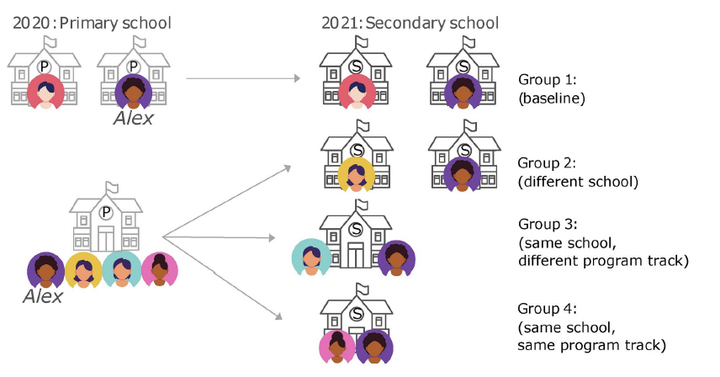Assessing COVID-19 transmission through school and family networks using population-level registry data from the Netherlands
 Image credit: [Javier Garcia Bernardo (Utrecht)]
Image credit: [Javier Garcia Bernardo (Utrecht)]
Abstract
Understanding the impact of different types of social interactions is key to improving epidemic models. Here, we use extensive registry data—including PCR test results and population-level networks—to investigate the impact of school, family, and other social contacts on SARS-CoV-2 transmission in the Netherlands (June 2020–October 2021). We isolate and compare different contexts of potential SARS-CoV-2 transmission by matching pairs of students based on their attendance at the same or different primary school (in 2020) and secondary school (in 2021) and their geographic proximity. We then calculate the probability of temporally associated infections—i.e. the probability of both students testing positive within a 14-day period. Our results highlight the relative importance of household and family transmission in the spread of SARS-CoV-2 compared to school settings. The probability of temporally associated infections for siblings and parent-child pairs living in the same household ranged from 22.6–23.2%. Interestingly, a high probability (4.7–7.9%) was found even when family members lived in different households, underscoring the persistent risk of transmission within family networks. In contrast, the probability of temporally associated infections was 0.52% for pairs of students living nearby but not attending the same primary or secondary school, 0.66% for pairs attending different secondary schools but having attended the same primary school, and 1.65% for pairs attending the same secondary school. It is worth noting, however, that even small increases in school-related infection probabilities can trigger large-scale outbreaks due to the dense network of interactions in these settings. Finally, we used multilevel regression analyses to examine how individual, school, and geographic factors contribute to transmission risk. We found that the largest differences in transmission probabilities were due to unobserved individual (60%) and school-level (35%) factors. Only a small proportion (3%) could be attributed to geographic proximity of students or to school size, denomination, or the median income of the school area.